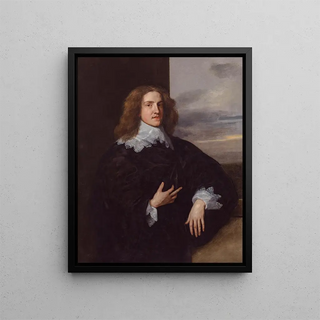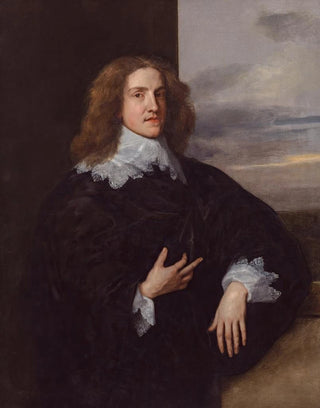Young gentleman - Antoine van Dyck | Art print


View from behind

Frame (optional)
In the fascinating world of baroque painting, the artwork "Young Gentleman" by Antoine van Dyck stands out for its elegance and profound humanism. This depiction of a young man, imbued with nobility and refinement, invites the viewer to immerse themselves in an era where art reflected the social and cultural values of a vibrant aristocracy. By offering an art print of this iconic piece, you do more than adorn a wall with an image—you bring a piece of history into your space, creating a dialogue between the past and the present.
Style and uniqueness of the artwork
Van Dyck's style is characterized by his ability to capture the personality and soul of his subjects. In "Young Gentleman," every detail matters: the choice of colors, the subtle light caressing the young man's face, and the relaxed yet confident pose that conveys self-assurance. The richness of the drapery and the delicacy of the textures reveal unparalleled technical mastery, while the expression of the character exudes a psychological depth that transcends a simple portrait. The piece also distinguishes itself through its innovative use of space, where the dark background highlights the central figure, thus emphasizing the intimate nature of the composition. It is this alchemy of technique and emotion that makes "Young Gentleman" a key piece in the baroque repertoire.
The artist and his influence
Antoine van Dyck, a pupil of Rubens, forged a strong artistic identity that allowed him to establish himself as one of the most influential portraitists of the 17th century. His career, marked by stays in England and Spain, was punctuated by encounters with the greatest figures of his time, including Charles I of England. Van Dyck skillfully integrated the influences of his contemporaries while developing a personal style that combines grandeur and intimacy. His impact on portrait painting is undeniable, inspiring generations of artists who followed, notably through his psychological approach to the subject and his attention to detail. Through "Young Gentleman," one perceives not only the talent of an artist but also the emergence of a new way of representing the [[L]]

Matte finish

View from behind

Frame (optional)
In the fascinating world of baroque painting, the artwork "Young Gentleman" by Antoine van Dyck stands out for its elegance and profound humanism. This depiction of a young man, imbued with nobility and refinement, invites the viewer to immerse themselves in an era where art reflected the social and cultural values of a vibrant aristocracy. By offering an art print of this iconic piece, you do more than adorn a wall with an image—you bring a piece of history into your space, creating a dialogue between the past and the present.
Style and uniqueness of the artwork
Van Dyck's style is characterized by his ability to capture the personality and soul of his subjects. In "Young Gentleman," every detail matters: the choice of colors, the subtle light caressing the young man's face, and the relaxed yet confident pose that conveys self-assurance. The richness of the drapery and the delicacy of the textures reveal unparalleled technical mastery, while the expression of the character exudes a psychological depth that transcends a simple portrait. The piece also distinguishes itself through its innovative use of space, where the dark background highlights the central figure, thus emphasizing the intimate nature of the composition. It is this alchemy of technique and emotion that makes "Young Gentleman" a key piece in the baroque repertoire.
The artist and his influence
Antoine van Dyck, a pupil of Rubens, forged a strong artistic identity that allowed him to establish himself as one of the most influential portraitists of the 17th century. His career, marked by stays in England and Spain, was punctuated by encounters with the greatest figures of his time, including Charles I of England. Van Dyck skillfully integrated the influences of his contemporaries while developing a personal style that combines grandeur and intimacy. His impact on portrait painting is undeniable, inspiring generations of artists who followed, notably through his psychological approach to the subject and his attention to detail. Through "Young Gentleman," one perceives not only the talent of an artist but also the emergence of a new way of representing the [[L]]
12,34 €






